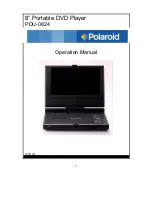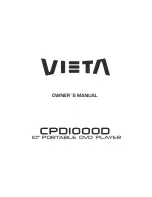
12
Gas Powered 3-in-1 Compressor / Generator / Welder
Compressor Safety
Breathable Air
1.
NEVER USE AIR FROM THIS EQUIPMENT
FOR BREATHABLE AIR
except in full
compliance with OSHA Standards 29 CFR 1910
and any other Federal, State or Local codes or
regulations.
Death or serious injury can
result from inhaling
compressed air without using
proper safety equipment. See
OSHA standards on safety
equipment.
2.
DO NOT USE AIR LINE ANTI-ICER
SYSTEMS
in air lines supplying respirators or
other equipment used to produce breathable air.
DO NOT discharge air from these systems in
unventilated or other confined areas.
Pressurized Components
This equipment is supplied with an ASME-designed
pressure vessel protected by an ASME-rated relief
valve. Pull the ring before each use to make sure
the valve is functional. Refer to figure 7. DO NOT
attempt to open valve while the machine is under
pressure.
Personal Protective Equipment
Be sure all operators and others around the
compressor and its controls comply with all
applicable OSHA, Federal, State and local
regulations, codes and standards relating to personal
protective equipment. This includes respiratory
protective equipment, protection for the extremities,
protective clothing, protective shields and barriers,
electrical protective equipment, and personal hearing
protective equipment.
Installation Area
Install this unit in a clean, dry and well-lit area. Be
sure installation area can maintain a temperature
range between 35º and 110º F (2º and 43º C).
If ambient temperature drops
below 32° F (0° C), be sure to
protect safety/relief valves and drain valves
from freezing. NEVER operate compressor
with temperatures below 15° F or above 125°
F (below minus 9.4° C or above 51.7° C).
1.
ALLOW SUFFICIENT SPACE AROUND
THE UNIT FOR MAINTENANCE ACCESS.
Mount unit with pulley towards wall and leave a
minimum of 15 inches (38.1 cm) of clearance.
2.
USE SHIMS TO LEVEL THE UNIT IF
INSTALLATION AREA IS NOT FLAT.
This will
avoid excessive vibration and premature pump
wear.
CAUTION
DO NOT install compressor
in boiler room, paint spray
room, or area where
sandblasting occurs. Make
sure inlet air is away from
exhaust fumes or other toxic,
noxious or corrosive fumes or substances.
3.
IF ACID IS USED IN OPERATING
ENVIRONMENT OR AIR IS DUST LADEN,
pipe the intake to outside, fresh air. Increase pipe
size by one size for every 20 feet (6.1 m) of run.
Be sure to install protective hood around intake
filter.
4.
INSULATE COLD WATER OR OTHER LOW
TEMPERATURE PIPES
that pass overhead
to avoid condensation dripping on compressor
which could cause rust and/or motor shorting.
Piping
Safety Steps
1.
INSTALL APPROPRIATE FLOW-LIMITING
VALVES
as necessary according to pipe size(s)
used and run lengths. This will reduce pressure
in case of hose failure, per OSHA Standard 29
CFR 1926.302(b)(7).
Piping / Tank Installation
Place tank feet on 1/4” thick
rubber pads. Thicker padding
will increase vibration and the possibility of
cracking the tank or other unit damage. Do
not place unit on dirt floor or uneven
surface.
Fasten anchor bolts snugly but do not
overtighten so normal vibration will not damage
unit.
This unit is somewhat top
heavy and should be bolted
to solid, flat surface to avoid falling and
premature pump wear. Splash lubrication
will not operate properly if unit is not level.
1.
USE A FLEXIBLE CONNECTOR
between
compressor tank and any piping system to
minimize noise, vibration, unit damage, and
pump wear.
2.
INSTALL APPROPRIATE ASME-CODE
SAFETY VALVES
and make sure piping system
is equipped with adequate condensate drains.
See figure 3.
Never install a shut-off valve
such as a globe or gate valve,
between the pump discharge
and the air tank unless a safety
valve is installed in the line
between valve and pump.













































